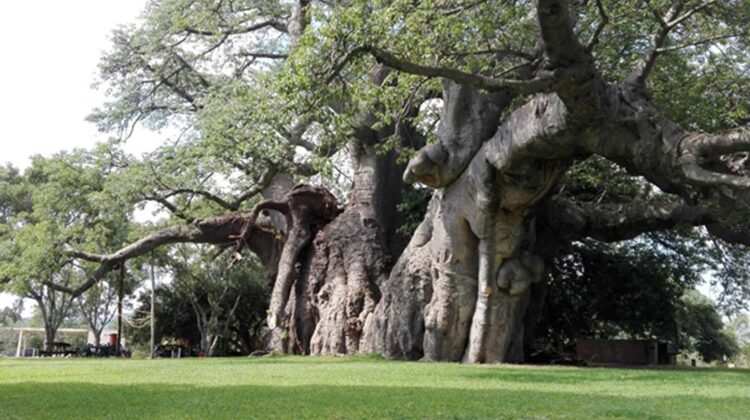
According to reports, nine of Africa’s oldest and largest baobab trees have died in the last decade. These trees, which range in age from 1,100 to 2,500 years, appear to be victims of climate change. Warming temperatures may have destroyed the trees directly or made them weaker and more susceptible to drought, diseases, fire, or wind, according to scientists.
Climate change has an impact on more than just old baobab trees. Ponderosa pine and Pinyon forests in the American West are disappearing at an alarming rate as the region’s summers become warmer. The famed Ohi’a trees in Hawaii are also withering at a quicker rate than previously recorded.
There are nine species of baobab trees in the world: Adansonia digitata (the species that may grow to the largest size and age), six in Madagascar, and one in Australia. The mainland African baobab was named after French botanist Michel Adanson, who characterized the Senegalese baobab trees.
The African Baobab is the largest and tallest of them all.
The African baobab is an amazing species. Not only because of its size and longevity, but also because of the unique way it grows several joined stems. The bark of the baobab grows in the spaces between these stems (called false cavities).
Because baobabs only develop weak growth rings, the researchers employed radiocarbon dating to analyze samples collected from various portions of each tree’s trunk and discovered that the oldest (which is now dead) was over 2,500 years old.

300 applications for baobab
Additionally, they have more than 300 uses. The iron-rich leaves can be boiled and consumed similar to spinach. The seeds can be crushed to make oil for cooking or cosmetics or roasted to make a substitute for coffee. The fruit pulp is a significant nutritional supplement in Africa as well as in the European, US, and Canadian markets since it contains six times as much vitamin C as oranges.
Fruit pulp is produced locally as juice, jam, or beer through fermentation. A taproot on the young seedlings can be eaten like a carrot. The blooms can be eaten as well. The bark can be used to construct ropes and baskets, while the roots can be used to make red dye.

Baobabs can store water in their hollow trunks, which can have therapeutic benefits. Baobab crowns are ideal locations for markets in many rural areas since they offer shade as well. Of course, local communities benefit financially from the sale of baobab goods.
Due to their central role in numerous African folktales, baobab trees also play a significant role in the cultural life of these people. They are mentioned in The Little Prince as well.
Developing baobab
In addition to serving human needs, baobab trees are essential components of the dry African savanna ecology. Baobab trees play an important role in maintaining soil moisture, promoting nutrient recycling, and preventing soil erosion. For a variety of creatures, including birds, lizards, monkeys, and even elephants, who may nibble their bark to give some moisture when there is no water nearby, they also serve as a significant source of food, drink, and shelter. The flowers are pollinated by bats, which fly great distances to consume the nectar of the flowers. The baobab tree is home to a variety of insects as well.
Baobab trees, despite their age, can be grown, as some West African communities have done for decades. The fact that they can take 15-20 years to bear fruit deters some farmers, but new study has shown that they can bear fruit in five years by grafting the branches of bearing trees to seedlings.
Finding the best varieties for cultivation requires years of research and selection because the fruit morphological and nutritional characteristics of many “indigenous” trees vary greatly. Domestication is a term used to describe the selection and nurturing of the best trees from those found in nature, not genetic engineering. Even while it appears simple, finding the best trees takes time, and many of them are already dead.
The loss of these oldest and largest baobab trees is very sad, but hopefully the information will spur us to take action to safeguard the world’s remaining big baobabs and begin closely monitoring their condition. And hopefully, if scientists are successful in developing the technique for figuring out which trees to grow, they will eventually be as common in our supermarkets as apples or oranges.

another disgusting example of us consuming ourselves to extinction in exchange for a filthy dollar, good job you blind wage slave, i hope your money buys you a good view in hell………..